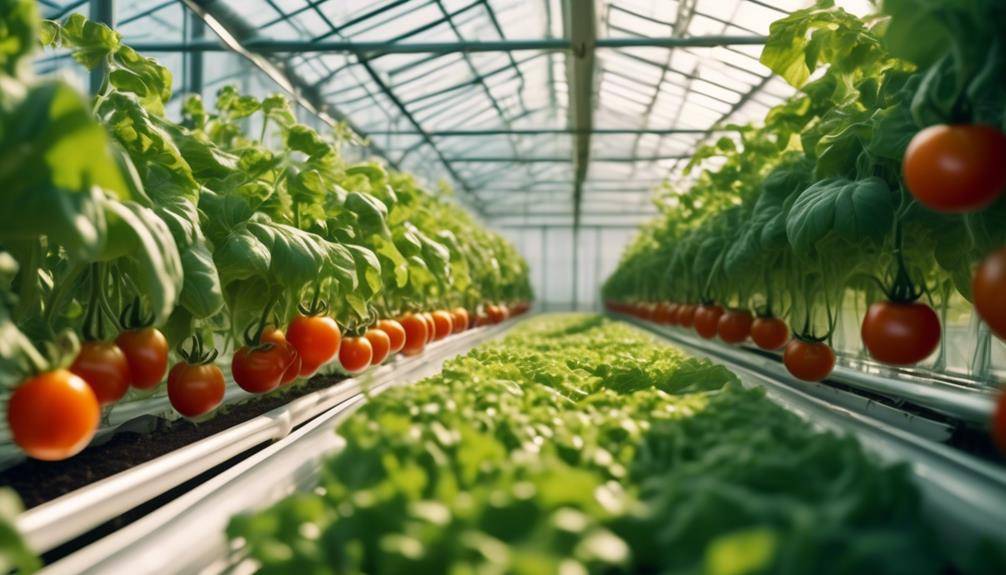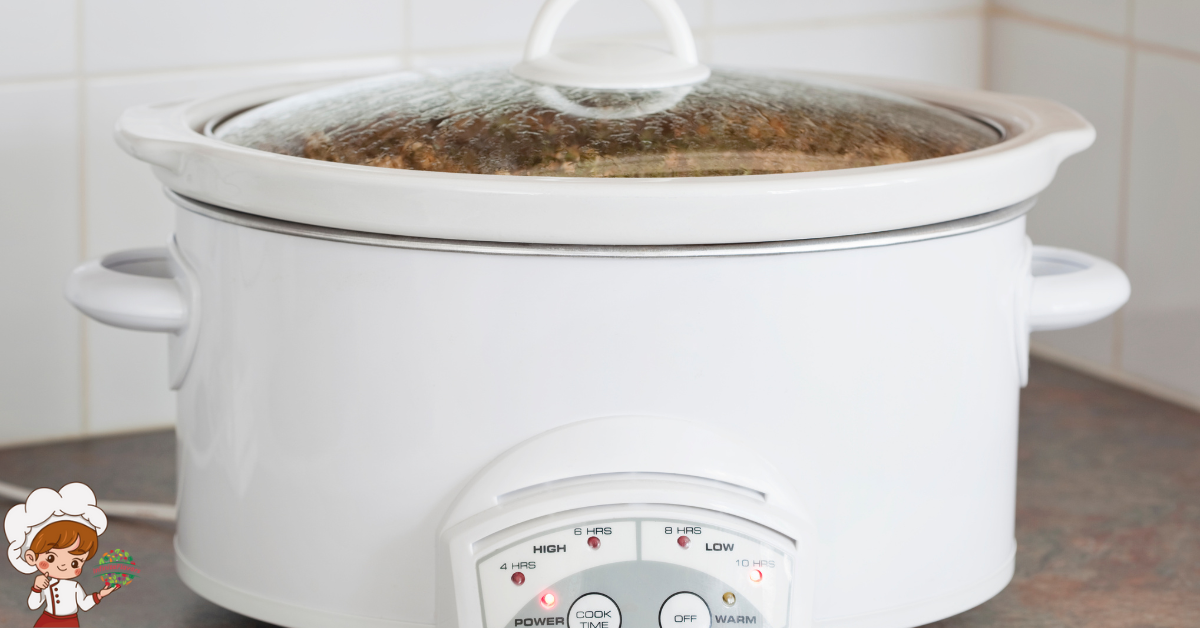Explore Amazing Sustainable Farming With Hydroponics

Sustainable Farming With Hydroponics; Did you know that hydroponic farming requires up to 90% less water compared to traditional soil-based agriculture? With water scarcity becoming an increasingly pressing issue, this statistic alone highlights the potential of hydroponics as a sustainable farming method. But what exactly is hydroponics, and how does it work? In this discussion, we will explore the basics of hydroponics, the advantages it offers, and its contribution to sustainable agriculture. From nutrient management to maximizing crop yields, we will delve into the different aspects of hydroponic farming and its economic viability. Stay tuned to learn more about the future trends in this innovative farming technique.
The Basics of Hydroponics
To understand the basics of hydroponics, you need to know that it is a soilless method of farming that allows plants to grow in nutrient-rich water. Hydroponics offers several advantages over traditional soil cultivation. One major difference is that in hydroponics, plants are grown directly in water, eliminating the need for soil. This eliminates the risk of soil-borne diseases and pests, resulting in healthier plants. Additionally, hydroponics allows for better control of nutrient levels, pH, and water quality, ensuring optimal conditions for plant growth.
In hydroponics, nutrient solutions are used to provide essential elements to the plants. These solutions are carefully formulated to contain all the necessary nutrients in the right proportions. This eliminates the need for soil to provide nutrients to the plants. With soil cultivation, plants rely on the organic matter in the soil to obtain nutrients. However, the nutrient content in soil can vary greatly, making it difficult to ensure consistent plant nutrition. In hydroponics, the nutrient solutions can be adjusted and monitored to meet the specific needs of each plant, resulting in faster growth and higher yields.
Furthermore, hydroponics allows for more efficient water usage compared to soil cultivation. In traditional farming, a significant amount of water is lost through evaporation and drainage. In hydroponics, water is recirculated within the system, minimizing water waste. Additionally, hydroponics systems can be designed to use less water overall, making it a more sustainable option for farming.
Advantages of Hydroponic Farming
In hydroponics, the advantages of this soilless farming method are numerous and offer significant benefits over traditional soil cultivation. One of the key advantages of hydroponic farming is its sustainability. By growing plants in a controlled environment, hydroponics eliminates the need for fertile soil, reduces water usage, and minimizes the use of pesticides and herbicides.
Firstly, hydroponics allows for the cultivation of plants without the use of soil. This means that farmers can grow crops in areas where soil quality is poor or nonexistent, such as urban environments or arid regions. This increases the availability of land for agriculture and reduces the pressure to convert natural habitats into farmland.
Secondly, hydroponics is highly water-efficient. Unlike traditional soil-based farming, where water is lost through evaporation and runoff, hydroponics recirculates water, minimizing waste. In fact, hydroponic systems use up to 90% less water compared to traditional farming methods. This conservation of water resources is crucial in regions facing water scarcity or drought conditions.
Furthermore, hydroponics reduces the need for chemical pesticides and herbicides. In a controlled environment, pests and diseases can be managed using natural methods, such as introducing beneficial insects or using organic pesticides. This reduces the environmental impact of agriculture and promotes healthier, pesticide-free produce.
Essential Components for Hydroponic Systems
The essential components of a hydroponic system include a reservoir, a nutrient solution, a delivery system, and a growing medium. These components play a crucial role in ensuring the success of your hydroponic farm.
Firstly, the reservoir is where the nutrient solution is stored. This solution contains all the necessary minerals and nutrients that the plants need to grow. It is important to regularly monitor and maintain the nutrient levels in the reservoir to ensure optimal plant growth.
Secondly, the delivery system is responsible for transporting the nutrient solution from the reservoir to the plants. This can be done through various methods such as drip irrigation, nutrient film technique, or aeroponics. Each method has its own advantages and is suitable for different types of plants.
The growing medium is another important component of a hydroponic system. It provides support to the plants’ roots and helps with nutrient absorption. Some commonly used growing mediums include perlite, coconut coir, and rockwool. The choice of growing medium depends on factors such as water retention, aeration, and pH stability.
In recent years, vertical farming has gained popularity in hydroponics. This technique involves growing plants in stacked layers, maximizing the use of space. Vertical farming allows for higher crop yields and reduces the need for land. Moreover, automation techniques such as sensors and timers can be incorporated into hydroponic systems to monitor and control various parameters such as temperature, pH levels, and nutrient delivery.
Choosing the Right Hydroponic System
When choosing the right hydroponic system, there are several factors to consider. First, you need to determine the type of system that best suits your needs, such as nutrient film technique or deep water culture. Secondly, consider factors like space availability, budget, and the specific crops you want to grow. By carefully considering these points, you can ensure that you select the most suitable hydroponic system for your sustainable farming goals.
System Types
Consider the specific needs of your plants and the available space when selecting the ideal hydroponic system for your sustainable farming endeavor. Two popular system types for hydroponic farming are vertical farming and organic hydroponics.
Vertical farming involves stacking multiple layers of plants, allowing for high-density cultivation and efficient use of space. This system is particularly suitable for urban environments with limited land availability. It also offers better control over lighting, temperature, and humidity, resulting in higher crop yields.
On the other hand, organic hydroponics focuses on using natural and sustainable methods to grow plants without synthetic chemicals. This system emphasizes the use of organic nutrients and pest control methods, ensuring the production of healthy and environmentally friendly crops.
Factors to Consider
As you explore the different hydroponic system types, it is important to consider several factors that will help you choose the right system for your sustainable farming goals. Factors to consider include the availability of space, cost, complexity, and the specific challenges faced in your area. Space availability is crucial as some hydroponic systems require more area than others.
Additionally, cost is a significant factor to consider, as some systems can be more expensive to set up and maintain than others. Complexity is another consideration, as some systems may require more technical knowledge and expertise. Finally, it is essential to consider the challenges faced in your area, such as extreme weather conditions or limited access to resources. By carefully considering these factors, you can choose the hydroponic system that best suits your sustainable farming goals.
Nutrient Management in Hydroponics
When it comes to nutrient management in hydroponics, there are three key points to consider. First, you need to ensure that your nutrient solution has the right composition to provide all the necessary elements for plant growth. Second, pH balancing techniques are crucial to maintain optimal nutrient uptake by plants. Lastly, monitoring nutrient levels regularly is essential to avoid deficiencies or toxicities that can harm your crops. By focusing on these points, you can effectively manage the nutrients in your hydroponic system and promote healthy plant growth.
Nutrient Solutions Composition
To ensure optimal nutrient management in hydroponics, it is essential to carefully consider the composition of nutrient solutions. Hydroponic nutrient requirements are different from traditional soil-based farming because plants in hydroponic systems rely solely on the nutrient solution for their growth. The composition of the nutrient solution plays a crucial role in optimizing nutrient uptake by the plants.
By providing the right balance of essential nutrients, hydroponic farmers can ensure that their plants receive all the necessary elements for healthy growth. The composition of nutrient solutions typically includes macronutrients such as nitrogen, phosphorus, and potassium, as well as micronutrients like iron, zinc, and manganese. Achieving the correct balance of these nutrients is crucial for promoting efficient nutrient uptake and maximizing plant growth in hydroponic systems.
Ph Balancing Techniques
Optimizing nutrient management in hydroponics goes beyond considering the composition of nutrient solutions; it also involves implementing effective pH balancing techniques. Maintaining the proper pH level is crucial for the healthy growth of plants in a hydroponic system. The pH scale ranges from 0 to 14, with 7 being neutral. Most hydroponic crops thrive in a slightly acidic pH range between 5.5 and 6.5. To maintain this optimal pH level, regular monitoring and adjustment of the nutrient solution are necessary. pH levels can be adjusted using pH up or pH down solutions, which can be added in small increments until the desired pH level is achieved.
It is important to note that pH levels in hydroponics can fluctuate due to factors like nutrient uptake, evaporation, or microbial activity. Regular monitoring and adjustment of the nutrient solution’s pH is essential for ensuring plant health and maximizing yields in hydroponic systems.
Monitoring Nutrient Levels
Monitoring nutrient levels is an essential aspect of nutrient management in hydroponics. Nutrient monitoring techniques play a crucial role in ensuring plants receive the right balance of nutrients for optimal growth and productivity. Regularly measuring nutrient levels in the hydroponic solution helps identify any deficiencies or excesses, allowing for timely adjustments.
There are various nutrient monitoring techniques available for hydroponic systems. Conductivity meters measure the electrical conductivity of the solution, providing an indication of nutrient concentration. pH meters help monitor the acidity or alkalinity of the solution, which affects nutrient availability. Additionally, nutrient testing kits can be used to analyze specific nutrient levels, such as nitrogen, phosphorus, and potassium.
Automated nutrient dosing systems are another valuable tool for nutrient management. These systems use sensors to continuously monitor nutrient levels and automatically adjust the nutrient solution accordingly. By maintaining precise nutrient levels, automated dosing systems ensure optimal plant growth and minimize the risk of nutrient imbalances.
Water Conservation in Hydroponics
By implementing efficient irrigation techniques, hydroponic sustainable farming optimizes water usage while producing high-quality crops. Water conservation is a key component of sustainable practices in hydroponics. Here are a few ways hydroponic systems conserve water:
- Recirculating systems: Hydroponic systems are designed to recirculate water, meaning that water is continuously reused within the system. This reduces water waste compared to traditional soil-based farming, where water is absorbed by the soil and lost through evaporation.
- Precision irrigation: Hydroponic systems use precise irrigation techniques, such as drip irrigation or nutrient film technique, to deliver water directly to the plant roots. This ensures that the plants receive the necessary amount of water without excess runoff or evaporation.
- Water monitoring: Hydroponic systems often include sensors and monitoring systems to track water levels and nutrient concentrations. This allows farmers to optimize water usage and adjust nutrient levels as needed, further reducing water waste.
- Water-efficient technologies: Some hydroponic systems incorporate water-efficient technologies, such as fogponics or aeroponics, which use minimal water while still providing adequate moisture to the plants.
Pest and Disease Control in Hydroponics
To effectively maintain the health and productivity of hydroponic crops, it is crucial to implement robust pest and disease control measures. Integrated pest management (IPM) is an approach that combines various strategies to minimize the use of chemical pesticides and instead focuses on prevention, monitoring, and control of pests and diseases. This holistic approach takes into account the unique conditions of hydroponic systems and aims to achieve long-term sustainability.
One of the key components of IPM in hydroponics is biological control. This involves the use of beneficial organisms to suppress pests and diseases. Predatory insects, such as ladybugs and lacewings, can be introduced into the system to feed on pests like aphids and spider mites. Nematodes, microscopic worms, can also be employed to target soil-borne pests. By utilizing these natural enemies, hydroponic farmers can reduce the reliance on chemical pesticides and maintain a healthier and more balanced ecosystem within their crops.
Another important aspect of pest and disease control in hydroponics is preventive measures. This includes maintaining proper hygiene and sanitation practices, such as regularly cleaning the system and removing any dead or decaying plant material. Additionally, implementing strict quarantine protocols for new plants or equipment can help prevent the introduction of pests and diseases into the system.
Monitoring is also crucial in IPM. Regular inspections of plants and the system can help identify early signs of pest or disease infestations. By catching these issues early on, hydroponic farmers can take appropriate action, such as removing affected plants or implementing targeted treatments, before the problem spreads and causes significant damage.
Maximizing Crop Yields With Hydroponics
Maximizing crop yields with hydroponics requires careful management of nutrient levels and environmental conditions. By optimizing these factors, you can not only increase the quantity of your harvest but also enhance the quality of your crops. Here are some key strategies to help you maximize your crop yields with hydroponics:
- Nutrient management: Regularly monitor and adjust the nutrient levels in your hydroponic system to ensure your plants receive the optimal balance of essential elements. This will promote healthy growth and maximize crop quality.
- Lighting optimization: Providing adequate and appropriate lighting is crucial for optimizing growth rates. Use high-quality, energy-efficient grow lights that emit the right spectrum and intensity for your specific crops. Adjust the duration and intensity of light exposure based on the growth stage of your plants.
- Temperature and humidity control: Maintain optimal temperature and humidity levels within your hydroponic system to promote optimal growth. Different crops have specific temperature and humidity requirements, so it’s important to research and adjust accordingly.
- CO2 enrichment: Increasing carbon dioxide levels in your hydroponic system can significantly enhance plant growth rates. Monitor and supplement CO2 levels to optimize growth and maximize crop yields.
Hydroponics and Sustainable Agriculture
Hydroponics offers a sustainable approach to agriculture, providing efficient resource utilization and minimizing environmental impact. This method of farming has the potential to significantly contribute to food security and address the challenges of urban agriculture.
In terms of food security, hydroponics can play a crucial role in ensuring a consistent and reliable food supply. By growing crops in a controlled environment, hydroponics eliminates the uncertainties associated with conventional farming, such as weather conditions and pests. This allows for year-round production and the ability to grow crops in regions where traditional farming may be limited. Additionally, hydroponics can produce higher crop yields compared to traditional methods, further contributing to food security by increasing the availability of nutritious food.
Urban agriculture faces unique challenges, including limited space and soil quality issues. Hydroponics provides a solution by allowing for vertical farming and utilizing nutrient-rich solutions instead of soil. This enables urban farmers to maximize their productivity in small spaces and grow crops in areas where traditional farming may not be possible. Furthermore, hydroponics can reduce the need for transportation of produce from rural to urban areas, decreasing carbon emissions and promoting local food production.
Economic Viability of Hydroponic Farming
With its potential to address the challenges of urban agriculture and contribute to food security, hydroponic farming also holds promise for economic viability. As the demand for locally grown, sustainable produce continues to increase, hydroponic farming presents an opportunity for entrepreneurs and farmers to tap into a growing market. Here are some key points to consider regarding the economic sustainability and market potential of hydroponic farming:
- Reduced land requirements: Hydroponic systems allow for the cultivation of crops in smaller spaces compared to traditional farming methods. This means that farmers can maximize their land use and potentially generate higher yields, leading to increased profitability.
- Lower water usage: Hydroponic systems use significantly less water compared to conventional farming methods. This not only helps conserve water resources but also reduces water costs for farmers, contributing to improved economic sustainability.
- Year-round production: Hydroponic farming enables year-round production regardless of weather conditions, providing a consistent supply of fresh produce to the market. This steady supply can lead to increased market potential and opportunities for farmers to establish long-term relationships with buyers.
- Higher crop quality and premium pricing: Hydroponically grown crops are often of higher quality due to the controlled environment in which they are cultivated. This can result in premium pricing and increased profitability for farmers.
Future Trends in Hydroponics
As hydroponic farming continues to gain popularity, it is important to anticipate and explore future trends in this sustainable agricultural practice. Two key trends that are expected to shape the future of hydroponics are vertical farming and automation.
Vertical farming involves growing plants in vertically-stacked layers, allowing for increased production in limited spaces. This trend is gaining traction due to its potential to maximize land use efficiency and reduce the environmental footprint of agriculture. By utilizing vertical space and optimizing light, water, and nutrient distribution, vertical farming can produce higher yields compared to traditional farming methods. Additionally, this method reduces the need for pesticides and allows for year-round production, making it a promising solution for urban areas with limited land availability.
Automation is another significant trend in hydroponics. With advancements in technology, the automation of various processes in hydroponic systems is becoming increasingly feasible. Automated systems can regulate environmental factors such as temperature, humidity, and nutrient levels, ensuring optimal growing conditions for plants. This not only reduces labor requirements but also enhances the precision and efficiency of crop production. By automating tasks such as nutrient dosing, pH monitoring, and water management, hydroponic farmers can achieve higher yields and lower operational costs.
Sustainable Farming With Hydroponics; Frequently Asked Questions
Can Hydroponics Be Used in All Types of Climates?
Hydroponics can be used in all types of climates, providing a solution for sustainable farming in extreme conditions. By controlling the environment, hydroponics ensures food security and allows for year-round cultivation regardless of external weather conditions.
Are There Any Potential Health Risks Associated With Consuming Crops Grown Hydroponically?
There might be potential health risks associated with consuming crops grown hydroponically, but research suggests that they can be just as nutritious as traditionally grown crops.
How Does Hydroponic Farming Compare to Traditional Soil-Based Farming in Terms of Water Usage?
When comparing hydroponic farming to traditional soil-based farming in terms of water usage, there are some key differences. Hydroponic farming typically uses less water due to its recirculating system, but it also requires careful monitoring to prevent water waste.
Can Hydroponic Systems Be Used for Growing All Types of Crops, Including Fruits and Vegetables?
Yes, hydroponic systems can be used to grow all types of crops, including fruits and vegetables. They offer many benefits for organic farming and are particularly useful in urban areas.
What Are the Main Challenges or Limitations of Implementing Hydroponics on a Large Scale?
The main challenges and limitations of implementing hydroponics on a large scale include the scalability of the system, the feasibility of managing nutrient levels, and the need for energy-intensive lighting.
Conclusion
In conclusion, hydroponic farming offers numerous advantages for sustainable agriculture. With its efficient use of water and nutrients, hydroponics maximizes crop yields and minimizes environmental impact. The use of technology and careful nutrient management ensures a consistent and high-quality harvest. Additionally, hydroponic systems can be economically viable in the long run, contributing to the future trends of sustainable farming. Embracing hydroponics can lead to a more sustainable and productive future for agriculture.








